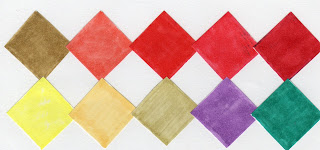 For day to evening looks
For day to evening looksWith a suit add a delicate camisole, a romantic blouse, a statement shoe, jewelry or sequined or glitter top.
With a mini dress wear tights during the day and in the evening add jewelry, clutch purse, scarf or heals
Scrubs
* Consider wearing a sash
* Consider choosing sunny yellow scrubs
* Consider wearing black or dark bottoms
* Choose a red or bright top
* Don’t overlook white for top or bottom
* Wear your school colours
* Remember why you wear the scrubs: germs, easy to clean, easy to change into.
 Purses
Purses
* Clear out your bag every night before you go to bed to help downsize the weight you are carrying
* Consider buying vintage online or through a specialized dealer
* Avoid black and beige and look for ones that fit with the majority or your wordrobe
* Purses are the most versatile way to complete your wardrobe

* Consider wearing a sash
* Consider choosing sunny yellow scrubs
* Consider wearing black or dark bottoms
* Choose a red or bright top
* Don’t overlook white for top or bottom
* Wear your school colours
* Remember why you wear the scrubs: germs, easy to clean, easy to change into.
 Purses
Purses* Clear out your bag every night before you go to bed to help downsize the weight you are carrying
* Consider buying vintage online or through a specialized dealer
* Avoid black and beige and look for ones that fit with the majority or your wordrobe
* Purses are the most versatile way to complete your wardrobe

For the best eye glass frame for your face choose a shape that is opposite to your face shape.
Use accessories as a conversation starter.









































